A Classic Pasta Dish From Naples, Italy
My wife read about this Genovese sauce recipe in the New York Times, and we had to try it. It is a simple southern Italian dish that reminds me a little of another favorite pasta sauce from the northern town of Bologna called bolognese sauce.
Genovese sauce, also known as “salsa alla genovese” in Italian, is a rich and flavorful pasta sauce originating from Genoa in the Liguria region of northern Italy. Its history dates back several centuries, and it has become a beloved classic in Italian cuisine.
The traditional Genovese sauce is made primarily with onions, slow-cooked in olive oil until they are caramelized and deeply flavorful. It often includes other ingredients such as beef, veal, pork, white wine, tomatoes, and aromatic herbs such as basil. The sauce is typically simmered for an extended period, allowing the flavors to meld together and the meats to become tender.
One key element that sets Genovese sauce apart is its slow cooking process, which can take several hours to even half a day. This patient simmering is a cooking method and a tradition essential for developing the sauce’s rich, complex flavors and tenderizing the meat.
Genovese sauce remains popular for pasta dishes, particularly with long, thin pasta shapes such as spaghetti or linguine. It’s a hearty and comforting sauce that embodies the rustic flavors of traditional Italian cooking. While there may be variations in ingredients and preparation methods, the essence of Genovese sauce lies in its slow-cooked onions and robust, savory flavor profile.
History
Genovese sauce carries a centuries-old legacy, deeply intertwined with the culinary traditions of the Ligurian region. A popular legend suggests that Genoese sailors, during their voyages, concocted this sauce by slow-cooking meat, onions, and other ingredients. This resulted in a flavorful and filling sauce, perfect for serving over pasta or polenta.
Another theory suggests that the sauce was born out of necessity during times of scarcity. The story goes that during lean times, the people of Genoa would make the most of the ingredients they had on hand, often including onions and cheaper cuts of meat to create a satisfying and nourishing sauce.
What Are Some of the Classic Ingredients in Genovese Sauce?
- Onions: Onions are the star ingredient of Genovese sauce. They are typically thinly sliced and slow-cooked in olive oil until they become caramelized and sweet, imparting a rich flavor to the sauce.
- Meat: Traditional Genovese sauce often includes cuts of beef, such as brisket or chuck, although some variations may incorporate veal or pork. The meat is typically diced or cubed and cooked along with the onions to add depth and richness to the sauce.
- Olive oil: High-quality extra virgin olive oil is essential for sautéing the onions and meat, as it adds flavor and richness to the sauce.
- White wine: White wine is often used to deglaze the pan after cooking the onions and meat, adding acidity and complexity to the sauce.
- Tomato: While not always included, some versions of Genovese sauce incorporate tomatoes, either fresh or tomato paste, to add depth of flavor and a touch of acidity.
- Aromatic herbs: Basil is a classic herb used in Genovese sauce, adding freshness and a hint of sweetness. Other herbs, such as parsley, may also enhance the sauce’s flavor.
- Salt and pepper: Seasoning with salt and pepper is essential to balancing the sauce’s flavors and enhancing its overall taste.
These ingredients come together through a slow-cooking process, allowing the flavors to meld and develop into a rich and savory sauce that pairs beautifully with pasta. While there may be variations in the specific ingredients and proportions used, these are the key components that define the classic Genovese sauce.
Simple But Not Fast
As you can see from the list of ingredients, there are very few, so the prep time isn’t that long. However, the time to break down the onions (and there are a lot of them) and then the beef is considerable, so don’t plan on making this one when you come home from work midweek.
What Pasta Goes Well With Genovese Sauce?
Genovese sauce pairs well with various pasta shapes, but some options are particularly popular due to their ability to hold the sauce and complement its flavors. Here are some pasta options that go well with Genovese sauce:
- Pappardelle: The wide and flat ribbons of pappardelle provide a perfect canvas for the rich and hearty Genovese sauce. The broad surface area allows the sauce to cling to the pasta, ensuring each bite is flavorful.
- Linguine: Linguine’s long, thin shape works well with Genovese sauce, allowing it to coat each strand evenly. The linguine’s delicate texture complements the sauce’s richness without overpowering it.
- Tagliatelle: Similar to pappardelle, tagliatelle is a ribbon-shaped pasta that pairs beautifully with Genovese sauce. Its slightly narrower width still provides plenty of surface area for the sauce to cling to, while the texture of the pasta adds a satisfying bite.
- Spaghetti: Spaghetti is a classic choice for serving with Genovese sauce. Its long, thin shape allows the sauce to coat each strand, ensuring a flavorful and satisfying dish.
- Gnocchi: While not a traditional choice, potato gnocchi can be a delicious accompaniment to Genovese sauce. The pillowy texture of the gnocchi contrasts nicely with the rich sauce, creating a comforting and hearty dish.
- Rigatoni: Rigatoni’s ridged surface and wide tubes make it an excellent choice for holding onto chunky sauces like Genovese. The sauce can seep into the tubes, providing bursts of flavor with every bite.
Ultimately, the best pasta for Genovese sauce comes down to personal preference. Whether you prefer long, thin noodles or short, tubular shapes, any pasta that can hold onto the sauce and provide a satisfying texture will work well with this hearty and flavorful sauce.
Mine is penne.
Timing
Timing is important. The onions and meat will take a while. How long? At least 2 hours and up to 3 hours. Then, you’ll need another hour to finish the sauce.
This is no quick pan sauce, and if you are serving it the same night, you have to figure out how long it will take the water to boil and how long it will take to cook the pasta to get all your timing down.
Another way to go is to make the sauce the day before, and then it’s just a matter of cooking the pasta and serving it with some Parmesan cheese. Up to you.
Penne Pasta with Genovese Sauce Recipe
Ingredients
- ¼ pound bacon chopped into ¼ inch pieces
- 2 carrots peeled and chopped
- 1 rib celery trimmed and chopped
- 2½ pounds beef chuck cut into 2-inch cubes
- 4 pounds red onions thinly sliced
- ⅓ cup olive oil extra virgin
- ¼ cup aromatic herbs basil or parsley
- Salt and freshly ground black pepper
- ¼ cup dry white wine
- 1 pound dried penne pasta
- Parmesan cheese freshly grated
Instructions
- Start by prepping all the ingredients. This is called mise en place and is one of the most important steps many home cooks skip (including myself) but should not.
- Heat up a large sauce pot over medium heat. When hot, add the bacon and let it cook for a few minutes to render the fat.
- Add the carrots & celery and lower the heat to medium.
- Cook for another 4 or 5 minutes, add the beef, then cook for an additional couple of minutes.
- Cover the beef with the onions, add the oil, and season with salt and pepper.
- Add the aromatic herbs.
- Cover the pan and bring the ingredients to a simmer. The onions release a ton of liquid, creating a lovely simmering liquid. Cook for 2 to 3 hours until the beef is nice and tender.
- Uncover the pot, turn up the heat to medium-high, and bring the sauce to a boil. It's crucial to stir often to prevent burning, which not only maintains the dish's quality but also keeps you engaged in the cooking process. If the pan gets too hot, you may need to adjust the heat from medium-high to medium and back again. This lasts 45 minutes to 1 hour until the meat falls apart and the sauce becomes creamy. It also means you must stay close to the stove and not walk away.(Start thinking about bringing a large pot of water to boil to cook the pasta.)
- Add the wine and give the sauce a stir.
- Lower the heat to low and let the sauce cook for another 10 - 15 minutes until it thickens to the desired consistency. Again, be sure to stir often to keep the sauce from burning.
- Cook the pasta until al dente, drain, and combine with sauce in 1 of 3 ways:1. Add the sauce directly to the sauce pot and gently toss to combine.2. Add the sauce to a large serving bowl, add the pasta, and gently toss to combine again.3. Add individual servings of pasta to bowls and top with some sauce.
- Add some freshly grated Parmesan cheese and serve. I like to bring some extra cheese to the table for those who want to add more to their dish.

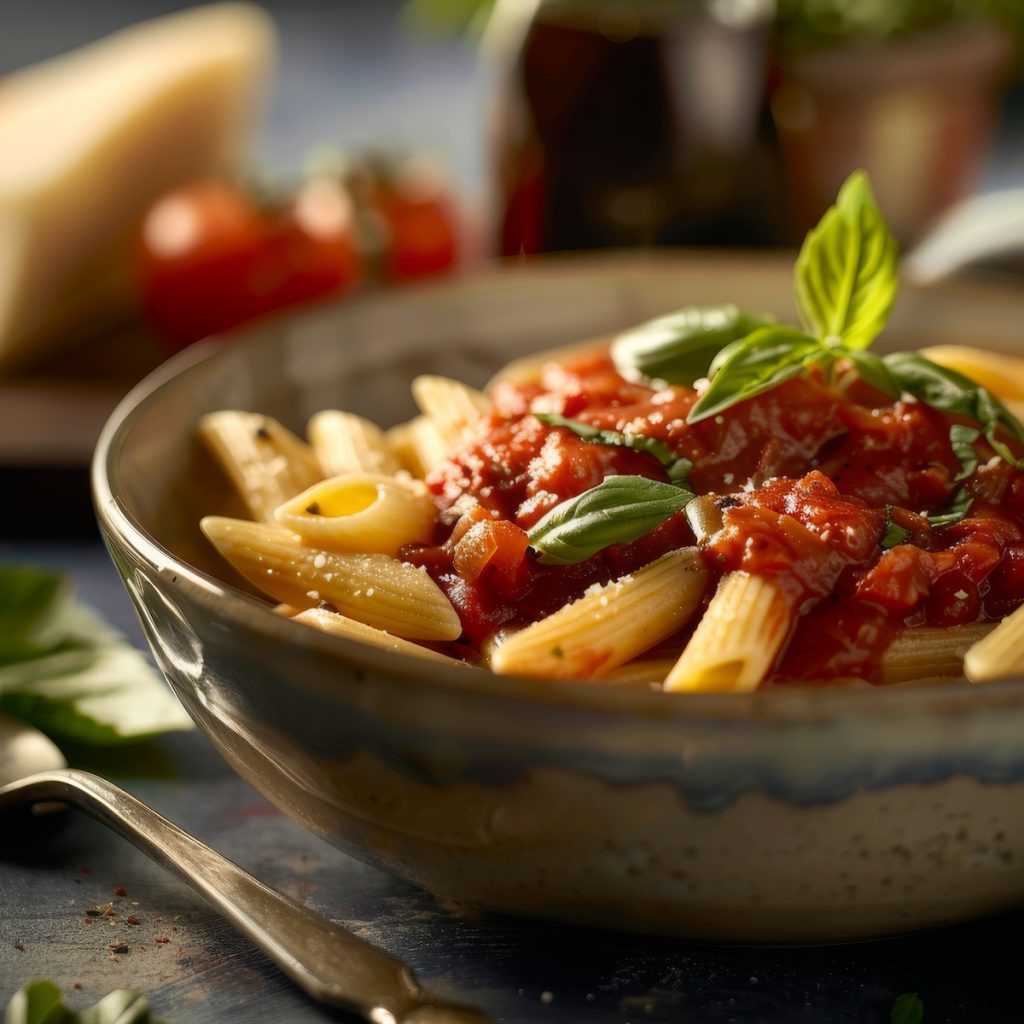

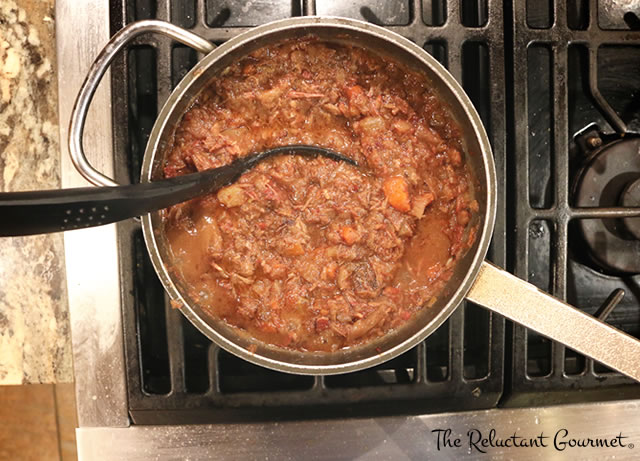
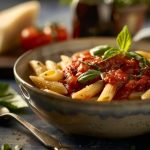
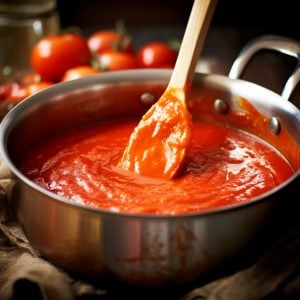
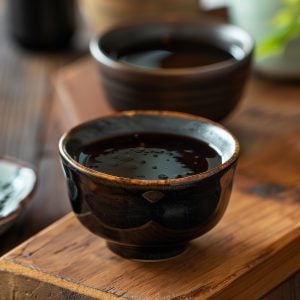
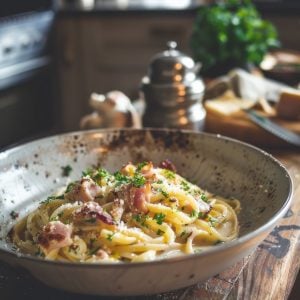
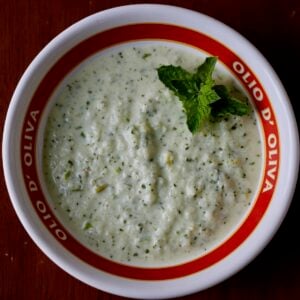
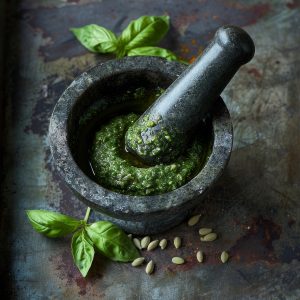
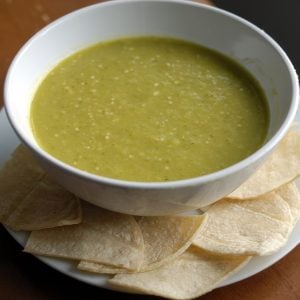
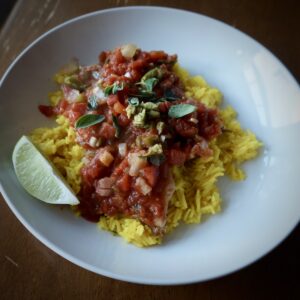
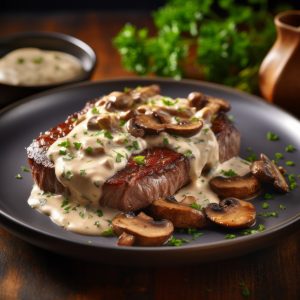


9 Responses
How many onions? How should they be chopped?
Thanks and cheers,
Lea
Lea, 4 pounds of red onions and they should be thinly sliced.
Hi,
I think you forgot to mention in the recipe the quantity of onions in the Penne Pasta with Genovese Sauce.
Cheers,
Don
Yes I did Don and thanks for pointing that out. 4 pounds of red onions.
Sounds wonderful – 2 questions – how much olive oil? – how much and what type of onion? Tanx in advance. This will be my Sunday dinner this weekend,
Hey Bob, 1/3 cup of oil and 4 pounds of red onion. Thanks for bringing this to my attention and please let me know how your sauce turns out this weekend.
thanks for another good one Mr Reluctant…
learned something new about Italian gravy…has/needs no tomato…
cheers
You are very welcome Big Tim. We need to catch up and talk food one of these days.
Hi there, My husband was Neopolitan and used an ‘eye of veal’ strung with twine to prevent from falling apart. They don’t use that fatty of meat in Naples. Then when slow cooked he removed it, sliced it, and topped it with a little onion sauce .. only tossing the pasta with the onion sauce. Viva la difference! Maria